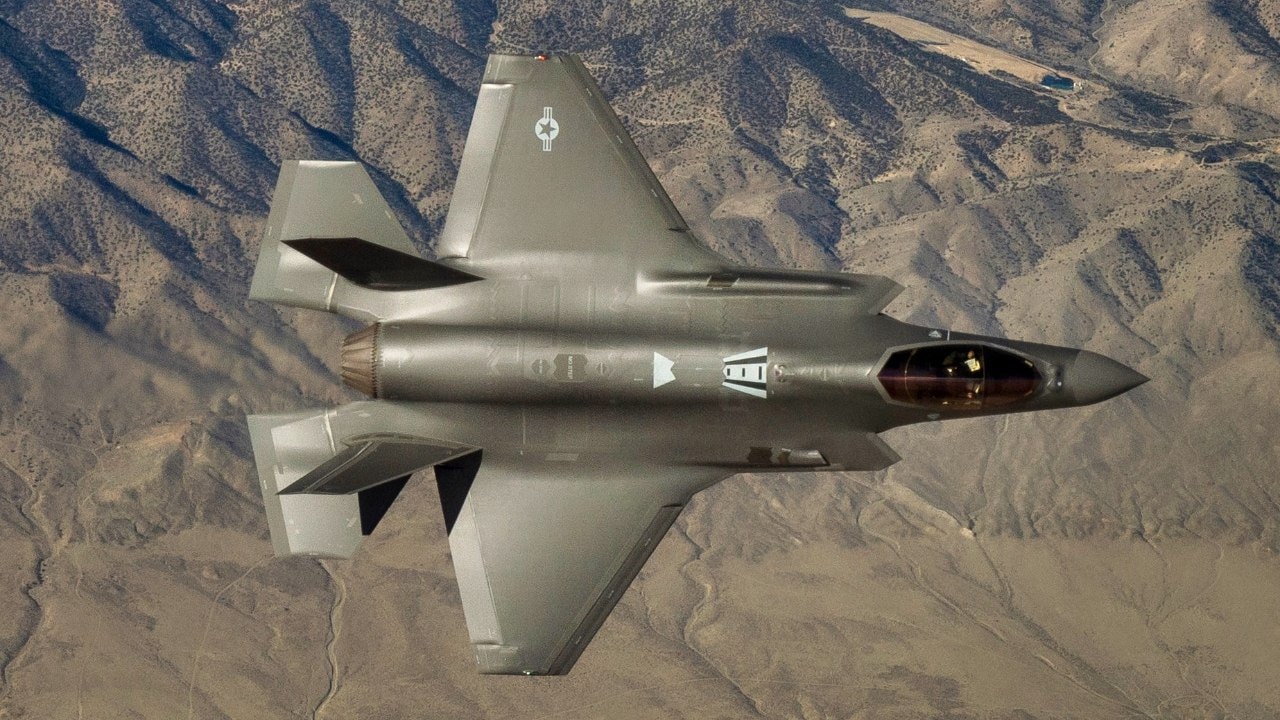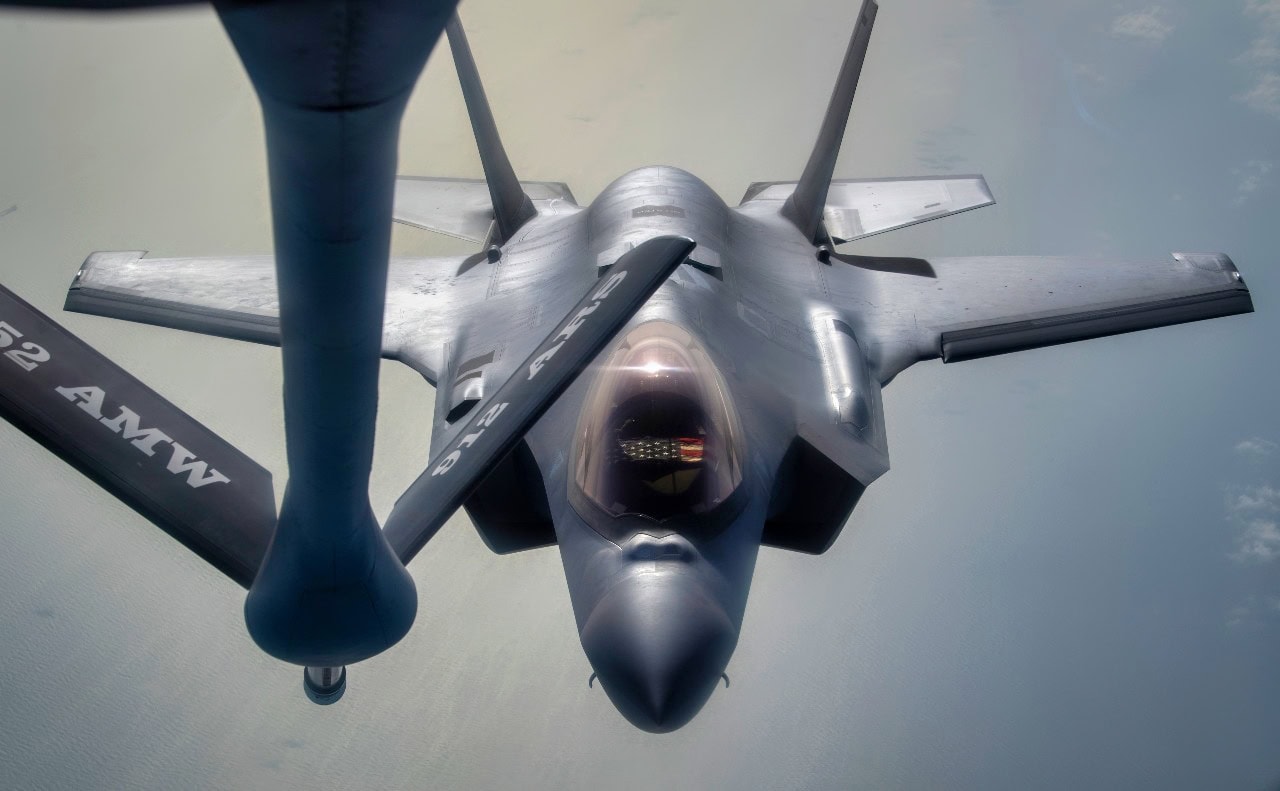Key Points: Canadian Prime Minister Mark Carney’s idea to replace Canada’s F-35 acquisition with Sweden’s JAS 39 Gripen is strategically flawed.
-The Gripen, despite updates, remains a fourth-generation aircraft unsuited to modern warfare dominated by stealth and advanced networking—areas where the F-35 excels.
-Moreover, the Gripen depends on critical U.S. components, negating Carney’s claim of reduced American dependency.
-Canada’s defense credibility, NATO interoperability, and Arctic defense depend on the F-35. Switching to the Gripen now would create logistical nightmares, increased costs, and reduced combat effectiveness. Carney’s proposal undermines Canada’s security at a time when military credibility is crucial.
Canada’s Fighter Mistake: Dumping the F-35?
Canadian Prime Minister Mark Carney’s suggestion that Canada should revisit its decision to buy the F-35 and instead consider Sweden’s JAS 39 Gripen is not just wrong – it’s strategically delusional.
On two major grounds, his argument falls apart. First, the Gripen, for all its marketing polish, remains a souped-up fourth-generation aircraft struggling to survive in a fifth-generation battlespace. Second, the notion that the JAS 39 Gripen would somehow insulate Canada from dependency on the United States is a fantasy – since the Gripen is built around critical U.S. components, Washington retains veto power over its export and sustainment.
Canada has already been down this road. A decade of handwringing, committee reviews, and political indecision led the country to finally – finally – commit to purchasing 88 F-35s. Sixteen of those jets are already under contract, with deliveries beginning in the next few years. Reopening the debate now, just as Canada starts building the infrastructure to support and integrate the F-35 into its air force, would be not only incoherent but reckless. Carney’s intervention suggests either a lack of familiarity with the basic facts of Canadian defense procurement or a willful disregard for them.
Let’s begin with the fighter itself. The Gripen is a solid aircraft – agile, affordable, and well-suited to countries that prioritize cost and political independence over raw combat power. It was originally designed for Sweden’s Cold War strategy: defend the homeland with dispersed operations, using roadways as makeshift runways, and get fighters back in the air quickly with minimal personnel. That made sense for Sweden in the 1980s and 90s. But Canada is not Sweden. And the world has moved on.
Modern air combat is no longer about close-in dogfights or rugged simplicity. It is about stealth, sensor fusion, and networked warfare. The F-35 was built for that world. The Gripen, despite upgrades to radar and avionics, was not.
The latest Gripen E/F variants may boast advanced electronic warfare systems and air-to-air missiles, but they lack the stealth characteristics that allow the F-35 to operate deep into contested airspace.
In a fight with peer adversaries like Russia or China, that difference would not be marginal – it would be decisive.
What makes the F-35 valuable is not just its stealth, but how it integrates sensors, shares targeting data in real-time with allied platforms, and gives pilots a decisive advantage in situational awareness. It’s a flying intelligence node as much as a fighter jet. That capability can’t be retrofitted into an older airframe like the Gripen. You either design for it from the ground up or you don’t have it. And in a conflict where milliseconds matter, the F-35 pilot sees first, shoots first, and kills first. That’s the entire point.
Then there’s Carney’s geopolitical argument – that buying the Gripen would free Canada from excessive reliance on the United States. That’s simply false. The Gripen may wear a Swedish badge, but its guts are American. It flies on a U.S.-built General Electric engine, uses U.S. weapons systems, and relies on other American-made components. Washington retains export control rights over these systems. That means the U.S. has the ability to block sales, halt deliveries, or withhold spare parts. Far from insulating Canada from American influence, choosing the Gripen merely shifts dependence from one U.S.-led program to another – without gaining the operational advantages of the F-35.
More to the point, why would Canada want to “free” itself from the United States in the first place? Canada’s defense posture – particularly in the Arctic and North Pacific – is deeply intertwined with the U.S. through NORAD and NATO. Interoperability with American forces is not just desirable, it is operationally essential. The F-35 is the only fifth-generation fighter in widespread use across NATO. Flying it ensures seamless communication, joint training, and integrated operations.
The JAS 39 Gripen, by contrast, would require separate doctrine, sustainment, and training pipelines – a logistical headache and a political signal of strategic aloofness at a time when Canada can least afford to look unserious.
And that’s where the politics of Carney’s position really start to unravel. The idea that Canada could rip up its current F-35 contracts, switch to a Gripen fleet, and still meet its NORAD and NATO obligations is a fantasy. It would introduce massive delays, escalate costs, and further erode Ottawa’s credibility within the alliance. Defense Minister Bill Blair has been clear: this purchase is not just about new planes – it’s about rebuilding Canada’s credibility with allies after years of delay. Carney’s alternative would blow that credibility up all over again.
Indeed, this is not the first time the Gripen has been considered. During the Harper and Trudeau governments, a series of reviews evaluated a range of fighters, including the Eurofighter Typhoon, Super Hornet, and the Gripen. Each was found wanting in different ways. The final assessment found the F-35 superior across almost every performance category, especially in terms of interoperability, survivability, and long-term relevance. The JAS 39 Gripen may have scored well on affordability and ease of maintenance – but it lost where it mattered most: effectiveness in a real war.
Some may argue that cost remains a concern, and that the F-35’s sustainment burden is still significant. Fair enough. But let’s remember: the unit price of the F-35 has dropped significantly over the years, and economies of scale – combined with shared allied logistics – will continue to reduce costs over time. More importantly, when it comes to defense, “cheaper” is not always better. In fact, it can be dangerously short-sighted. If Canada’s fighter fleet cannot survive and win in a high-end conflict, the cost savings are meaningless.
Carney’s proposal also ignores the immense difficulty and cost of operating a split fleet. Canada has already signed contracts for 16 F-35s. Any attempt to walk that back and operate both Gripens and F-35s in parallel would mean duplicating maintenance facilities, pilot training programs, simulators, spare parts inventories, and aircrew certification processes. The logistical burden would be massive. It would eat into the defense budget, stretch the Air Force thin, and create unnecessary operational risk. This is precisely why Finland, Switzerland, and other countries that considered the Gripen ultimately chose the F-35 – they didn’t want to compromise.
Mark Carney has a sterling résumé in global finance. But when it comes to defense, he is out of his depth. Fighter procurement is not a spreadsheet exercise. It is a strategic choice about how Canada defends its sovereignty, deters threats, and contributes meaningfully to its alliances. Canada has made that choice. The F-35 is not perfect – but it is the right aircraft for the world we live in, not the world Carney half remembers, half imagines.

Two U.S. Air Force F-35A Lightning IIs, assigned to the 4th Fighter Squadron from Hill Air Force Base, Utah, conduct flight training operations over the Utah Test and Training Range on Feb 14, 2018. The F-35 is designed to provide the pilot with unsurpassed situational awareness, positive target identification and precision strike in all weather conditions. (U.S. Air Force photo by Staff Sgt. Andrew Lee)
Abandoning that decision now in favor of a less capable fighter with no real political payoff and significant operational downsides would be indefensible. Canada has finally begun to right the ship after years of defense mismanagement. The last thing it needs is to be steered off course by someone with no experience in military affairs and no real grasp of what’s at stake.
About the Author: Andrew Latham
Andrew Latham, Ph.D., a tenured professor at Macalester College in Saint Paul, Minnesota. He is also a Senior Washington Fellow with the Institute for Peace and Diplomacy in Ottawa and a non-resident fellow with Defense Priorities, a think tank in Washington, DC. This first appeared in RealClearDefense.

